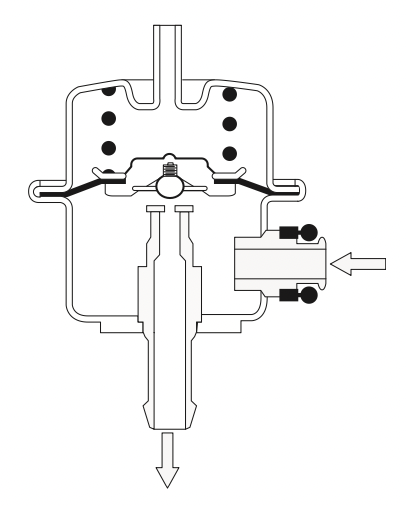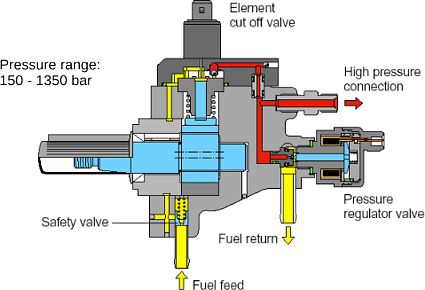The fuel pressure regulator valve is an essential component of the fuel system in any vehicle. It controls the fuel pressure and ensures that the engine receives the correct amount of fuel. A fuel pressure regulator valve that is stuck open can cause various problems, such as a rich fuel mixture, increased emissions, and poor fuel economy. In this blog, we will discuss the causes and effects of a fuel pressure regulator valve that is stuck open and how to diagnose and fix the problem.
Causes of a fuel pressure regulator valve that is stuck open:
There are several reasons why a fuel pressure regulator valve may become stuck open. One of the most common causes is a faulty fuel pressure regulator valve. Over time, the valve can become clogged with dirt, debris, or fuel residues, causing it to malfunction. Another common cause is a damaged diaphragm. If the diaphragm is damaged, it may not be able to maintain the correct fuel pressure, causing the valve to remain open.
Effects of a fuel pressure regulator valve that is stuck open:
A fuel pressure regulator valve that is stuck open can cause several problems. The most common effect is a rich fuel mixture. When the valve is stuck open, the fuel pressure in the fuel rail will be too low, causing more fuel to be injected into the engine than necessary. This can result in decreased fuel economy, increased emissions, and poor engine performance. Additionally, a fuel pressure regulator valve that is stuck open can cause the engine to stall or fail to start altogether.
Diagnosing a fuel pressure regulator valve that is stuck open:
Diagnosing a fuel pressure regulator valve that is stuck open requires some knowledge of the fuel system and access to a fuel pressure gauge. To diagnose the problem, start by connecting the fuel pressure gauge to the fuel rail and checking the fuel pressure. If the fuel pressure is lower than the specified range, the valve may be stuck open. Next, remove the vacuum hose from the fuel pressure regulator valve and inspect it for fuel. If there is fuel in the vacuum hose, the valve is likely stuck open. Finally, inspect the valve for damage or signs of wear.
Fixing a fuel pressure regulator valve that is stuck open:
Fixing a fuel pressure regulator valve that is stuck open usually involves replacing the valve. Begin by relieving the fuel system pressure and disconnecting the fuel lines from the valve. Next, remove the valve from the fuel rail and inspect it for damage or signs of wear. If the valve is damaged or worn, replace it with a new one. Once the new valve is installed, reconnect the fuel lines and vacuum hose and test the fuel pressure.
Conclusion:
A fuel pressure regulator valve that is stuck open can cause several problems, including a rich fuel mixture, decreased fuel economy, increased emissions, and poor engine performance. To diagnose and fix the problem, you need to have some knowledge of the fuel system and access to a fuel pressure gauge. If you are unsure about the diagnosis or repair, it is best to take your vehicle to a qualified mechanic.

The fuel pressure regulator valve is a small component that is typically located on the fuel rail of the engine. Its primary function is to control the fuel pressure that is delivered to the fuel injectors. The fuel pressure regulator valve operates by using a diaphragm that reacts to changes in engine vacuum pressure. When the engine vacuum is high, the fuel pressure regulator valve allows more fuel to flow through the fuel injectors, and when the engine vacuum is low, it restricts fuel flow.
If the fuel pressure regulator valve becomes stuck open, it can cause several issues. A rich fuel mixture is one of the most common issues associated with a fuel pressure regulator valve that is stuck open. A rich fuel mixture means that there is too much fuel and not enough air in the combustion chamber, which can lead to decreased fuel economy, increased emissions, and poor engine performance. Another issue associated with a fuel pressure regulator valve that is stuck open is the engine stalling or failing to start altogether. This is because too much fuel is being delivered to the engine, and it cannot combust properly.
Diagnosing a fuel pressure regulator valve that is stuck open requires some knowledge of the fuel system and access to a fuel pressure gauge. The fuel pressure gauge is used to check the fuel pressure in the fuel rail, and if it is lower than the specified range, the valve may be stuck open. The vacuum hose that connects to the fuel pressure regulator valve can also be checked for fuel. If there is fuel in the vacuum hose, it is a sign that the valve is stuck open.
Fixing a fuel pressure regulator valve that is stuck open involves replacing the valve. The fuel system pressure needs to be relieved before the fuel lines are disconnected from the valve. Once the valve is removed, it can be inspected for damage or wear, and if necessary, replaced with a new one. It is important to ensure that the fuel lines and vacuum hose are reconnected properly, and the fuel pressure is tested to ensure that it is within the specified range.
In conclusion, a fuel pressure regulator valve that is stuck open can cause several problems, including a rich fuel mixture, decreased fuel economy, increased emissions, and poor engine performance. Diagnosing and fixing the problem requires some knowledge of the fuel system and access to a fuel pressure gauge. If you are unsure about the diagnosis or repair, it is best to take your vehicle to a qualified mechanic.
Advantages of a Fuel Pressure Regulator Valve:
- Improved Fuel Efficiency: The fuel pressure regulator valve ensures that the engine receives the correct amount of fuel, which helps to improve fuel efficiency.
- Reduced Emissions: A properly functioning fuel pressure regulator valve helps to regulate the fuel pressure, which leads to reduced emissions.
- Increased Engine Performance: By maintaining the correct fuel pressure, the fuel pressure regulator valve can help to increase the engine’s performance.
Disadvantages of a Fuel Pressure Regulator Valve:
- Malfunctioning Components: If the fuel pressure regulator valve malfunctions, it can cause various issues, such as decreased fuel efficiency, increased emissions, and poor engine performance.
- Restricted Fuel Flow: A faulty fuel pressure regulator valve can lead to a restriction of fuel flow, which can cause the engine to stall or fail to start altogether.
- Costly Repairs: Replacing a fuel pressure regulator valve can be a costly repair, especially if it requires the services of a qualified mechanic.
- Limited Lifespan: The fuel pressure regulator valve is a wear item and will eventually need to be replaced due to normal wear and tear.
In conclusion, while the fuel pressure regulator valve has several advantages such as improved fuel efficiency, reduced emissions, and increased engine performance, it also has some disadvantages such as malfunctioning components, restricted fuel flow, costly repairs, and a limited lifespan. It is essential to keep the fuel pressure regulator valve in good condition to ensure the proper functioning of the fuel system and the overall performance of the vehicle. Regular maintenance and inspection can help to prevent issues with the fuel pressure regulator valve, and timely replacement can ensure that the vehicle runs smoothly and efficiently.










